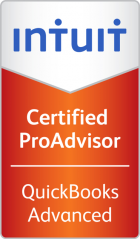 If you have an endless to-do list, you’re not alone these days. Most of us are constantly looking for ways to work smarter and get more done. Here are six quick tips to help your productivity so you can go home early.
If you have an endless to-do list, you’re not alone these days. Most of us are constantly looking for ways to work smarter and get more done. Here are six quick tips to help your productivity so you can go home early.
1. Group tasks
If you have lots of errands to run during the week, why not set aside one day or a part of a day to get them knocked out all at once? It saves start/stop time and may also save gas and time getting dressed up (if you work at home).
You can also try grouping tasks such as personal care appointments, doctor’s appointments, sales calls, and client visits. Your schedule will be freed up in big blocks of time so you can focus on creative projects without having to constantly watch the clock.
2. Use checklists
Checklists are best when you have a task you need to repeat. They’re great when you’re stressed and don’t want to forget a step (such as in packing your suitcase for a trip). They’re also great for tasks that repeat infrequently (Now how did I do that last time?)
Stop and take a minute to create your checklist the next time you perform a routine task that you will repeat in the future. You’ll thank yourself the next time.
3. Organize your email
If you are using Microsoft Outlook for email, consider getting it to work as hard as you do. As your email comes in, you can have Outlook sort the low-priority emails that come from lists, Google alerts, social media notifications, and subscriptions into folders. Create a subfolder in your inbox called “lists.” Then set a Rule to have that type of email go into the “lists” folder. This one step will substantially de-clutter your inbox.
4. Delegate more
If you’re a little wary about delegating, try this exercise: Look at your to-do list and put an hourly rate next to each task that you are doing. If someone paid you to do that job, what would you get on the market? Then look at the tasks with the lowest dollar value next to them.
If you feel your time is worth more than the lowest rated tasks on your lists, it’s time to help someone else out who is unemployed so you can be freed up to use your more valuable skills.
5. Order online
When is the last time you’ve been to the office supply or pharmacy when you know they deliver? (Yeah, me, too. Enough said.)
6. Avoid long learning curves
Whenever you realize a task will have a really long learning curve, then it’s a red flag that it’s time to find someone to hire to do it for you. Here are several examples:
• Doing your taxes and researching all the tax law changes
• Installing a new accounting system and customizing it
• Learning about every new social media platform out there
• Writing a legal contract
• Creating a report
• Troubleshooting a computer problem
The cost of going through the learning curve can be dozens of hours of your precious time lost compared to bringing an expert on board who can perform that task in a matter of hours or minutes.
How did these six ideas compare to your favorites? I hope you picked up an idea or two so you can get home earlier.



